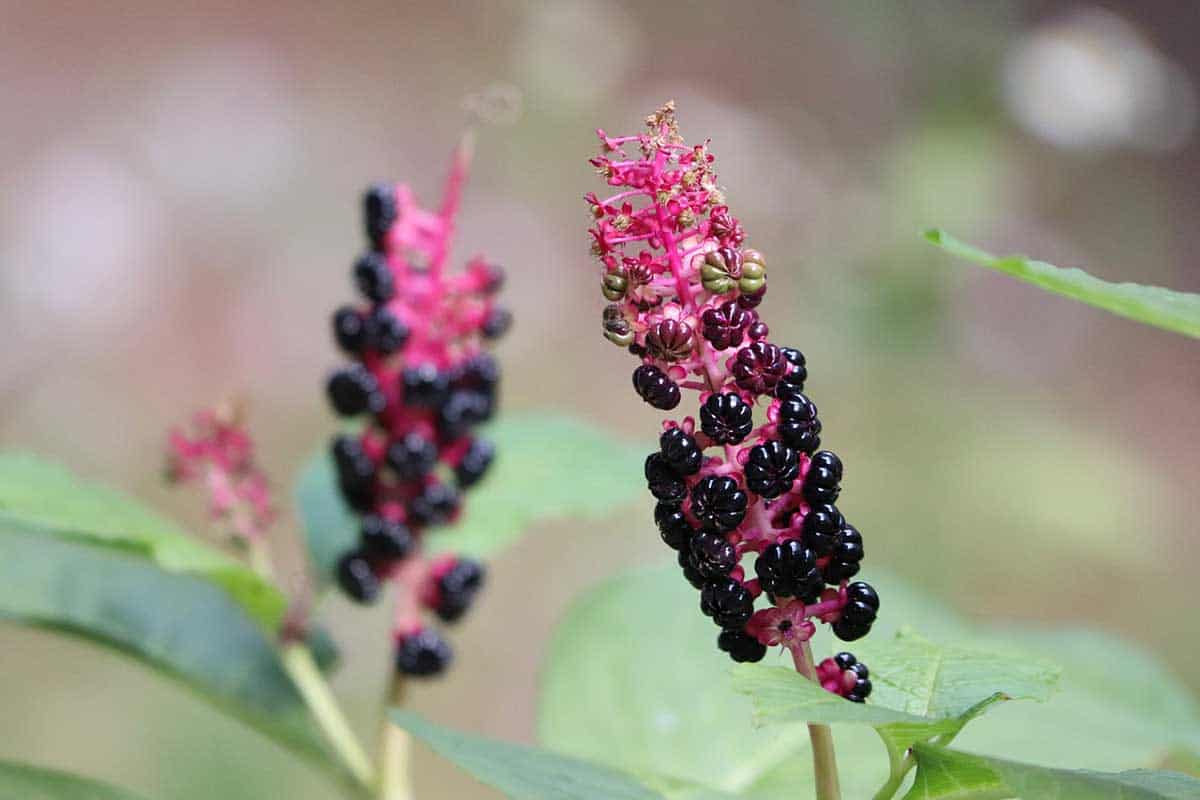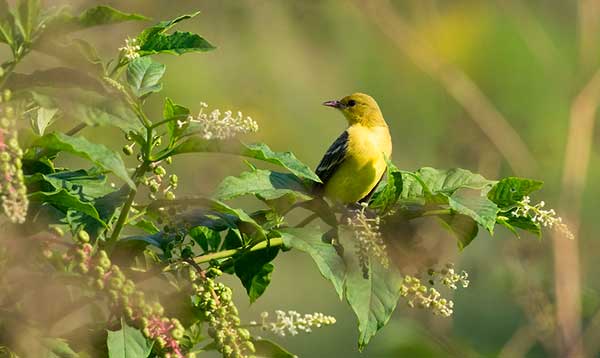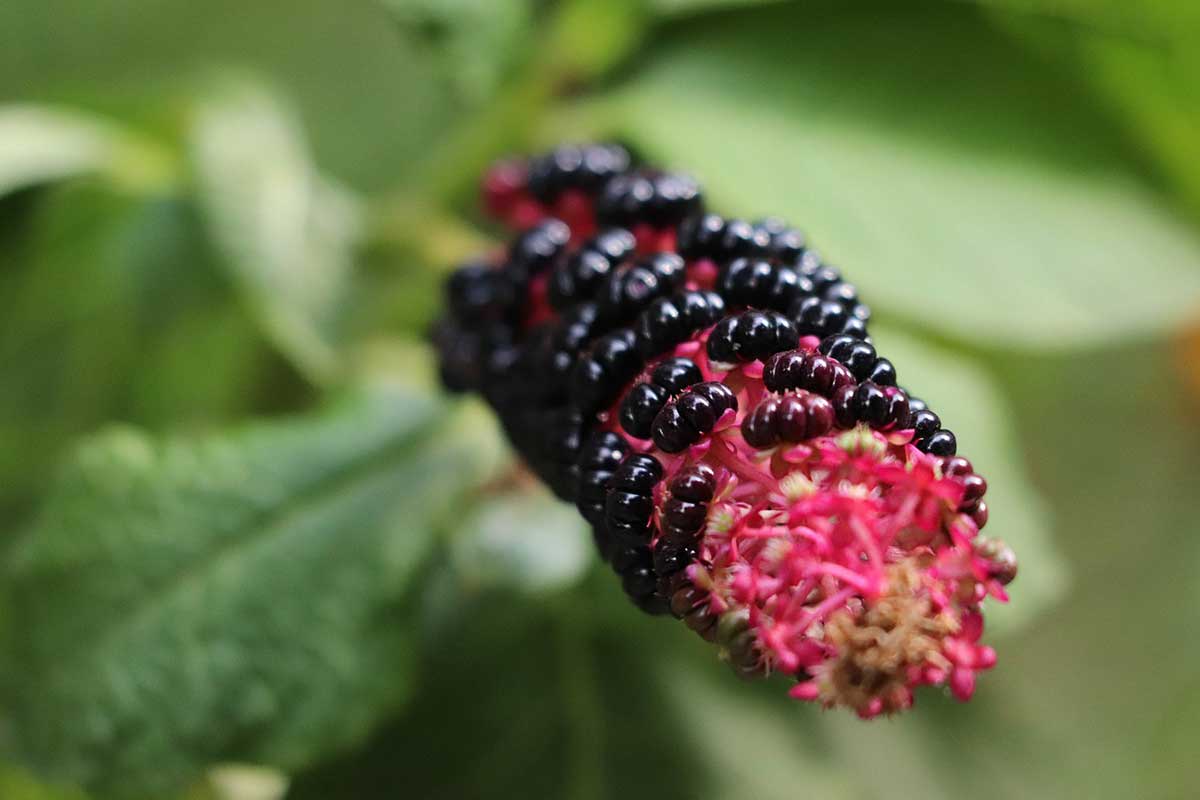This page may contain affiliate links. If you click and buy, we might get a small commission at no cost to you.
Although you can find them in most states of the U.S., pokeweed (Phytolacca Americana) is a gardener’s nightmare. With their quick-spreading habits and deep taproots, these weeds are hard to control and kill. One pokeweed plant can actually produce 50,000 seeds within a lifetime! If you come across this plant in your yard you may need to know how to get rid of pokeweed, which is what we discuss in this article.
Bu first, a bit more about this invasive plant.
Pokeweed contains a toxic sap that can be fatal if you ingest them and cause pokeweed rashes if you touch them. Every part of the plant is toxic, including its edible-looking berries that come out from July to September.
You’ll want to make sure these weeds are under control to keep yourself, your family, and pets safe. As mentioned above, in this article, we’ll cover how to get rid of pokeweed with 11 proven tips.
How to get rid of pokeweed – 11 tips
Here are 11 tips on removing and killing pokeweed to keep your outdoor space safe and looking well-maintained.
1. Be careful of pokeweed toxins
This one is probably the most important tip before diving into the specifics of removing and killing pokeweed. You must always remember to stay protected!
Ending up with pokeweed rashes is very unpleasant, especially since they can be itchy, blister-like rashes similar to poison ivy. Some symptoms of pokeweed poisoning also include vomiting, headaches, muscle spasms, and low blood pressure.
Make sure to wear long sleeves and gloves as well as use protective glasses if you are spraying the plants. Also, wash your clothes after handling the plants to remove any sap that may have contacted the fabrics.
If you end up getting into contact with the toxins, wash the area immediately and treat any mild rashes with calamine lotion. You’ll want to visit a doctor if you get any worsening symptoms.
2. Always remove the entire root
You can’t just pull the tops of these weeds; you have to make sure you get the entire taproot. Without removing the roots, you’ll find they grow back very quickly. For new shoots that are still small, you can use your hands to grab at the base firmly before pulling straight up. Make sure to wear gloves!
For larger plants or pokeweed in clay soil, you’ll need to do some digging. Dig a circle around the base of the plant with a spade. It should be 12 inches in depth and diameter to make sure you get to the taproots. Then you’ll need your spade to pry it loose since these weeds cling stubbornly to the soil.

3. Wait for after the rain
Another tip for how to get rid of pokeweed is to simply wait for it to rain. Since pokeweed roots stay so sturdy in the ground, removing these plants from the soil can be difficult.
If your ground is hard or compacted, you might want to wait until after it rains. This way it will be easier to pull the roots out of damp, soft ground.
If there’s no rain in the forecast, consider watering the ground a little to dampen up your soil. Working with damp soil might be messier, but it can be worth the reduced effort to remove pokeweed roots.
4. Make sure the pokeweed is dry and dead
Never throw any pokeweed you removed to the side of your yard or into your compost pile. These plants will just take root and regrow in a new location they are placed. You’ll want to make sure they are dried out and dead first.
You can easily dry them out by leaving them in the sun. Make sure to place them away from the soil, such as on concrete or a tarp like this one. You’ll know it’s dead once it withers up and is dry.
5. Apply a weed killer
Although you should use them with caution, weed killers can be a good solution for removing pokeweed. Simply spray the weed or brush killer on the plants.
If the product you purchase doesn’t come with a spray nozzle, you can pour it into a pressure spray. You’ll still need to remove the plants after they are dead, but it should be easier than trying to pull out healthy plants.
If your pokeweed infestation just simply won’t go away. You can use solutions with 2% of glyphosate herbicide, such as RoundUp Max Control. Apply the solution on the leaves and wait for ten days before pulling up the plants. For an even more effective application of glyphosate, you’ll want to dig a hole around the pokeweed and apply the solution directly to the roots.
6. Try a natural weed killer
If you don’t want to use a chemical weed killer, you can try using distilled vinegar on the pokeweeds. The acidity of distilled vinegar is a proven method to burn the roots and kill them.
Create a solution with 50% distilled vinegar and 50% water to spray onto the pokeweed daily until they die. You can also purchase natural weed killers made from ocean salt water, vinegar, and soap.
7. Cut pokeweed flowers and berries
Pokeweeds produce symmetrical white, green, or pink flowers with 4 or 5 sepals but no petals. They will grow into grape-like clusters of purple to blackish berries.
Since these weeds can only reproduce with the seeds of their berries, you can prevent the spreading of the plant by removing flowers and berries.
Simply cut off the elongated clusters and dispose of them away from soil or compost piles, such as tightly sealed in a trash bag. If you’re feeling adventurous, you could try using the berries to dye any fabrics a fuchsia or crimson color. However, be careful when handling the berries and wash the fabric multiple times before use.

8. Use a rototiller to find loose root pieces
To really make sure pokeweed doesn’t regrow in your yard, you’ll want to get all the loose root pieces that may be lingering around. You can use a rototiller to churn up your soil at 12-inch depths. Then use a rake to go through the soil and rake up all the loose pieces of taproots.
Without doing this, you may find the loose roots that haven’t died start growing new plants again. Also, make sure never to leave any seeds or berries behind!
9. Repeatedly cut down the pokeweed
If you’re not into using sprays or digging up roots, you can try cutting down the pokeweed repeatedly. Gradually the taproots will run out of energy for regrowth and die.
First, you’ll want to remove any berries that will leave seeds behind for new plants. Then use shears to cut the plant at the base or run over it with a lawnmower. Repeat this cutting until you no longer see any new growth.
10. Keep birds out of your yard
Birds are unbothered by the toxicity in the pokeweed plants and the main culprits for spreading their seeds. One preventative measure to stop the wild growth of these weeds in your yard is also to keep birds away from feeding on them.

There are plenty of methods to scare birds away, including:
- Hanging shiny and reflective things on tree branches or structures near pokeweed growth
- Place sculptures that look like bird predators such as cats and owls
- Spray natural bird repellents around your yard, such as citrus fragrances or a mixture of chili pepper, vinegar, and water
11. Monitor for pokeweed growth
We’ve given you some solid tips for how to get rid of pokeweed. However, even after you’ve removed the pokeweed and raked the soil, you’ll still want to monitor the area for potential regrowth.
Checking at least every two weeks is a good time range for you to catch sprouting plants. The moment you see a new pokeweed emerge, pull them out instantly. Of course, make sure you get the roots!
You’ll also want to wait at least 10 days and monitor the area that used to have pokeweed before planting any new crops or flowers. This way, you won’t have these pesky weeds ruining your new plants.




